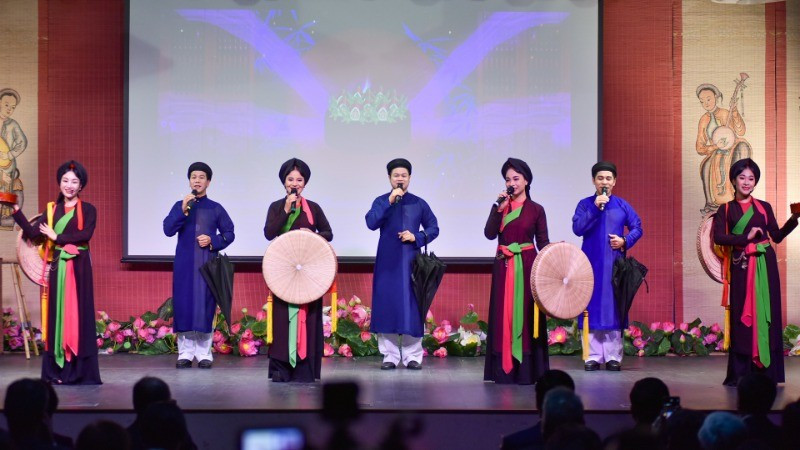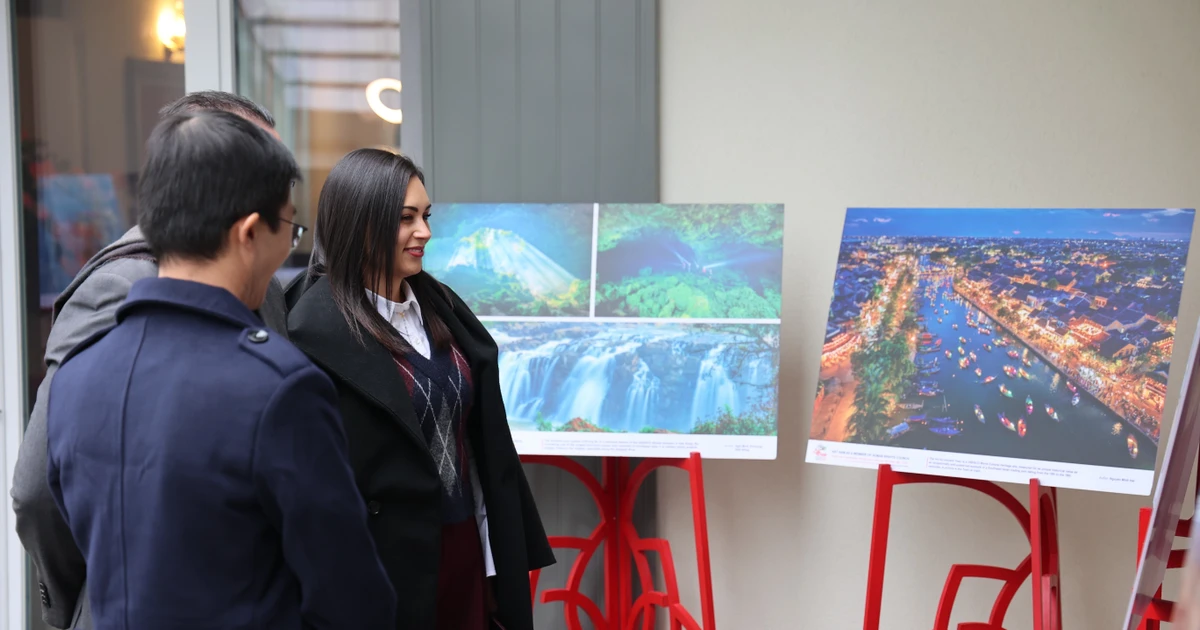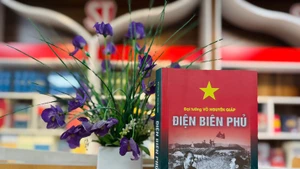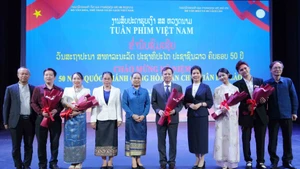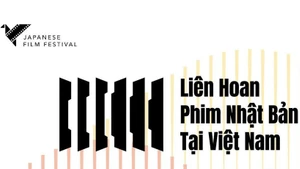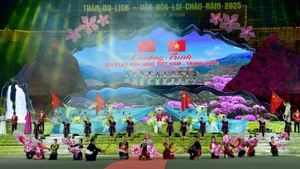 |
| Speaking at the opening ceremony, Director of Bac Ninh Provincial Department of Culture, Sports, and Tourism Trinh Huu Hung emphasised that Bac Ninh is an ancient land that is rich in historical and cultural traditions and home to a treasure trove of unique cultural heritages that embody the essence of Vietnamese identity, most notably the Quan Ho folk songs and the traditional craft of Dong Ho folk painting. |
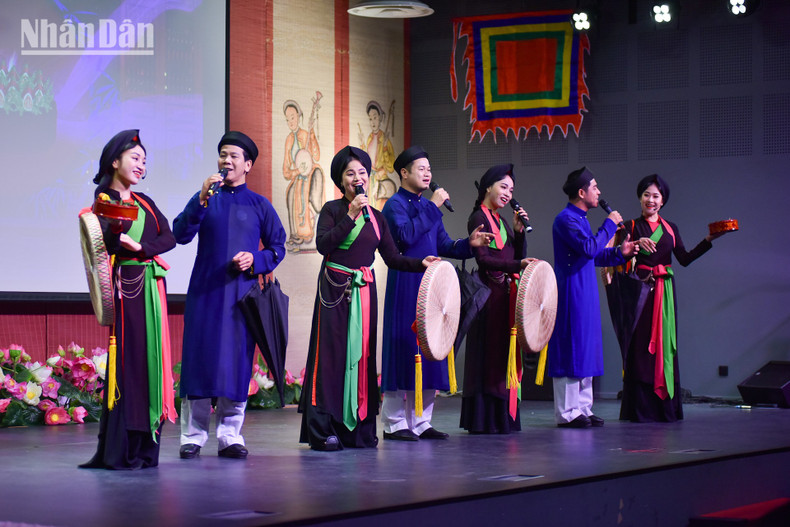 |
| The art programme opens with tender Quan Ho folk melodies from Bac Ninh, which are widely regarded as a distinctive and unique art form—representative of Vietnam's and the world's traditional folk performance styles. |
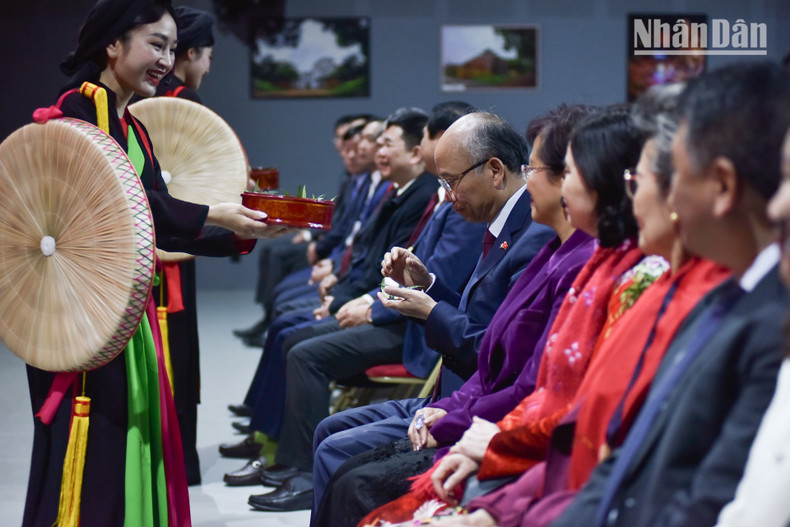 |
| Performances such as “Moi nuoc moi trau” (Inviting water and betel and areca), “Vui bon mua” (Joy in all four seasons), along with the antiphonal singing pieces “Qua cau non” (Young Areca Nut) and “Che man hao” (Fine Tea), vividly showcase the traditional vocal techniques of Quan Ho, known for their resonant, rich, and rhythmic characteristics. |
 |
| In addition, the song “Se chi luon kim” (Threading the needle), performed by artist Kim Cuong on the unique monochord instrument (dan bau), features a fresh and captivating element. |
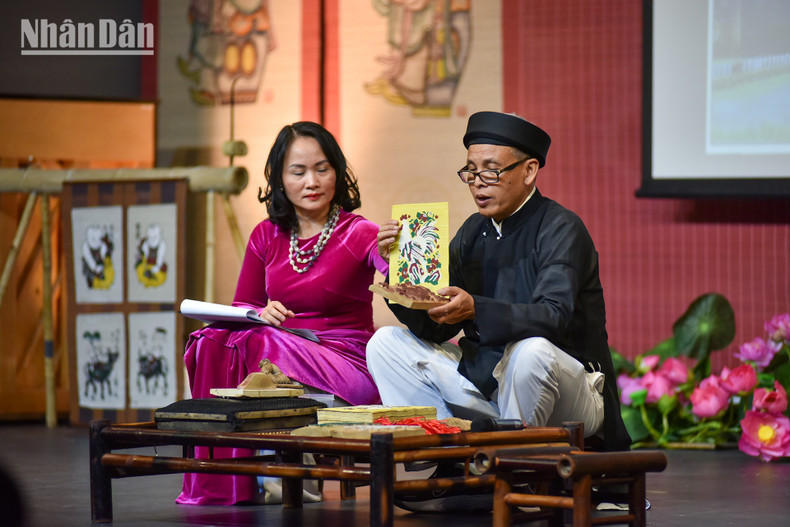 |
| The programme’s highlight is the in-depth introduction of the traditional craft of Dong Ho folk painting. Dong Ho painting is a time-honoured handicraft of Vietnam, featuring vibrant artworks created through woodblock printing using entirely natural materials. The meticulous and intricate process, from preparing the woodblocks and mixing colours to printing and finishing, results in pieces rich in artistic and cultural value. |
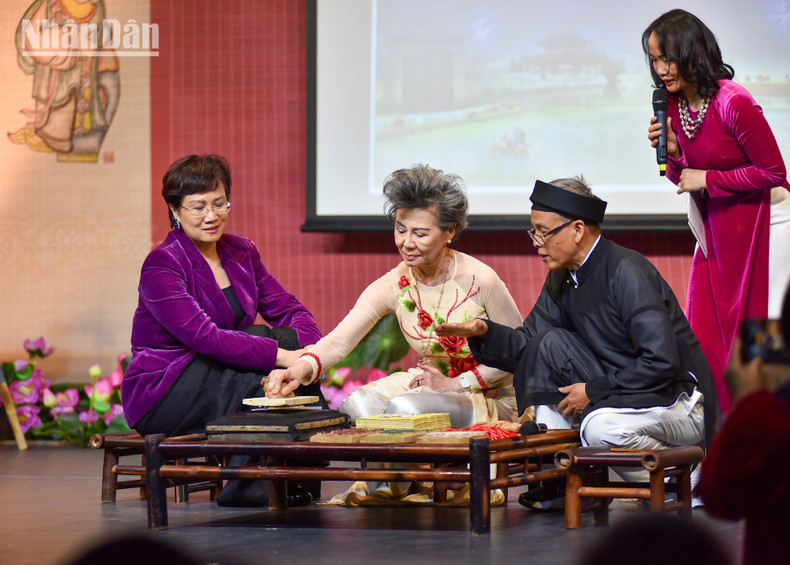 |
| Dong Ho paintings are incredibly diverse, encompassing genres such as worship paintings, congratulatory paintings, story paintings, proverb-based paintings, and landscape scenes. Each painting is not only a piece of art but can also be a story, a moral lesson, or a heartfelt wish for a prosperous and happy life. Familiar images like “Ga me dan dan con” (Mother Hen with Chicks), “Lon dan’ (Piglets), “Dam cuoi chuot” (The Rat's Wedding), and “Thay do coc” (The Toad Scholar) have become enduring cultural symbols. |
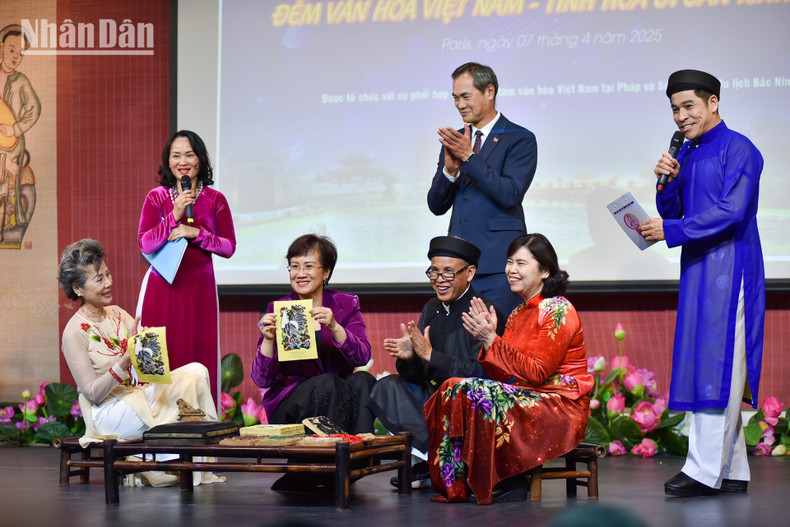 |
| Today, the Dong Ho folk painting craft risks fading into obscurity. Acknowledging the importance of preserving and promoting this unique form of folk art, the Vietnamese Government has submitted a proposal for UNESCO to inscribe Dong Ho paintings into the List of Intangible Cultural Heritage in Need of Urgent Safeguarding. |
 |
| To give the audience a more vivid and in-depth understanding of the Dong Ho painting-making process, a special video was presented, allowing viewers to better appreciate the intricacy and artistic value embedded in each carved line and vibrant colours of Dong Ho folk paintings. |
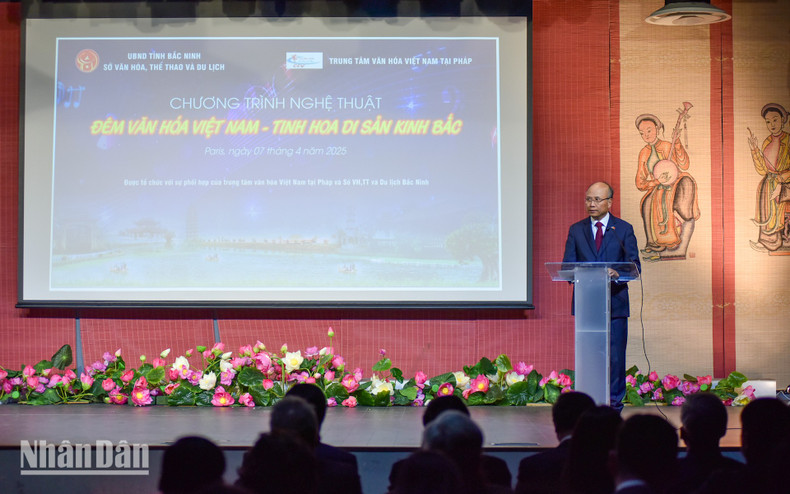 |
| Vietnamese Ambassador to France Dinh Toan Thang affirms that Kinh Bac, which is known today as Bac Ninh, is a land of rich cultural heritage, the birthplace of invaluable legacies that have greatly enriched the national cultural treasure trove. The Ambassador also stresses the pivotal role of culture as a bridge connecting nations and peoples, fostering mutual understanding, building trust, and laying a solid foundation for cooperation across various fields. |
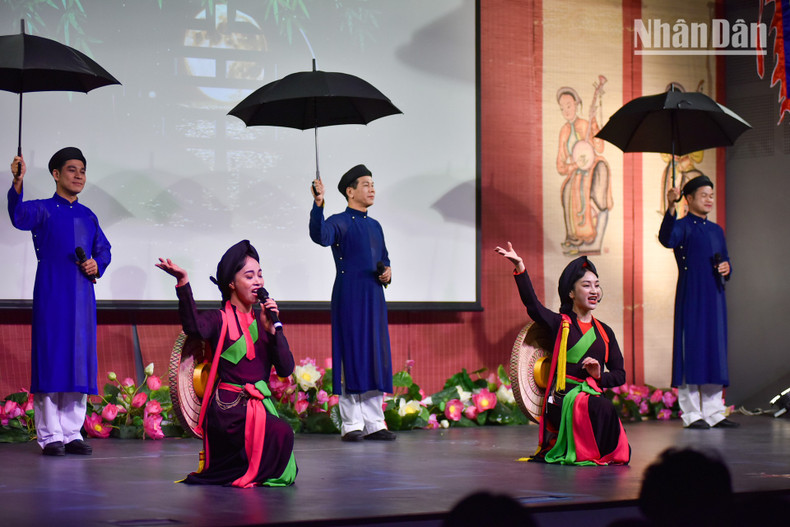 |
| The programme reflects Vietnam’s ongoing efforts to fulfil its commitment to UNESCO on the preservation of intangible cultural heritage. |
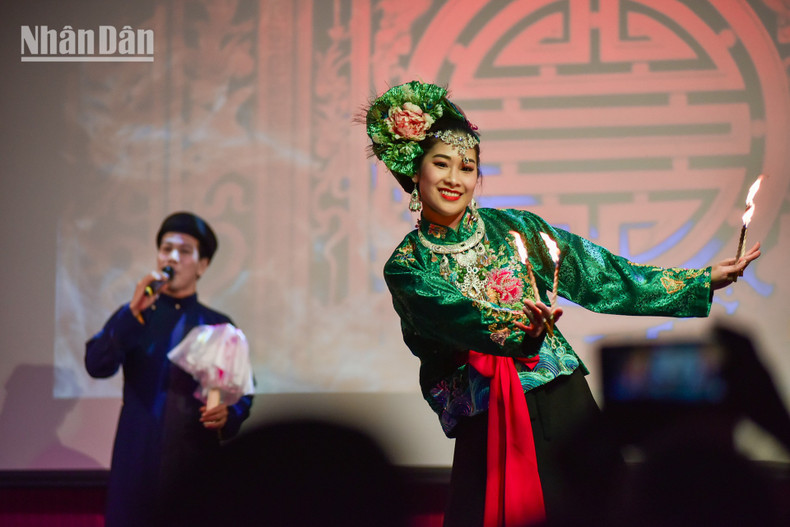 |
| The combination of music and performance art in the piece “Co be thuong ngan” (Goddess of the Forest) conveys a profound spiritual and cultural value. |
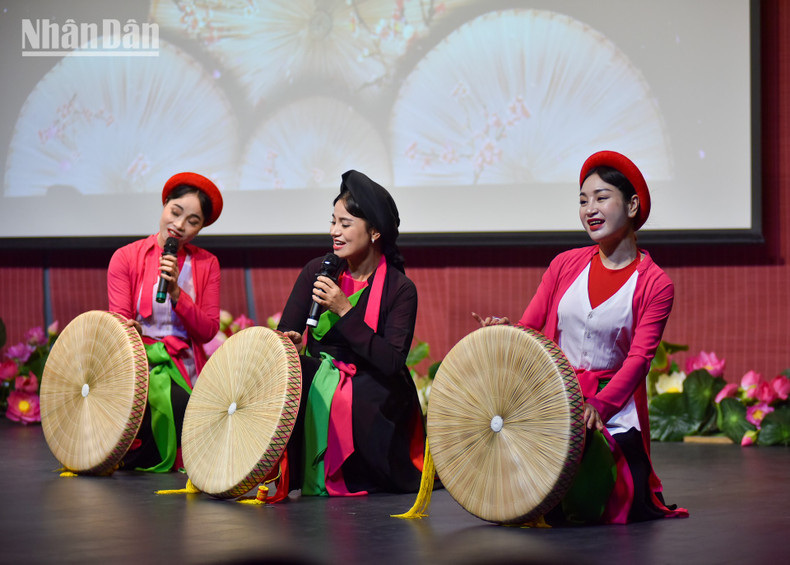 |
| The programme concludes with the Quan Ho folk song “Chuong vang gac cua tam quan” (Golden Bell at the Triple Gate) to bid farewell, performed by artists from the Bac Ninh Quan Ho Folk Song Theatre. |
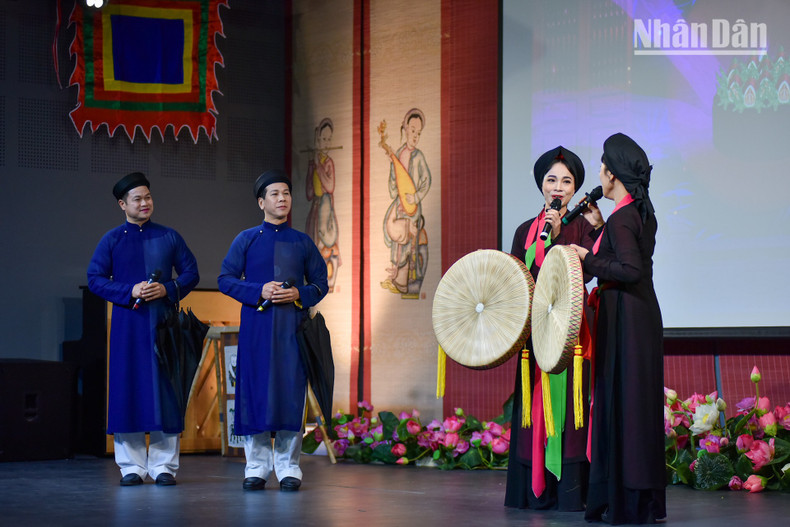 |
| The cultural programme at the Vietnam Cultural Centre in France leaves a lasting impression on the audience. |
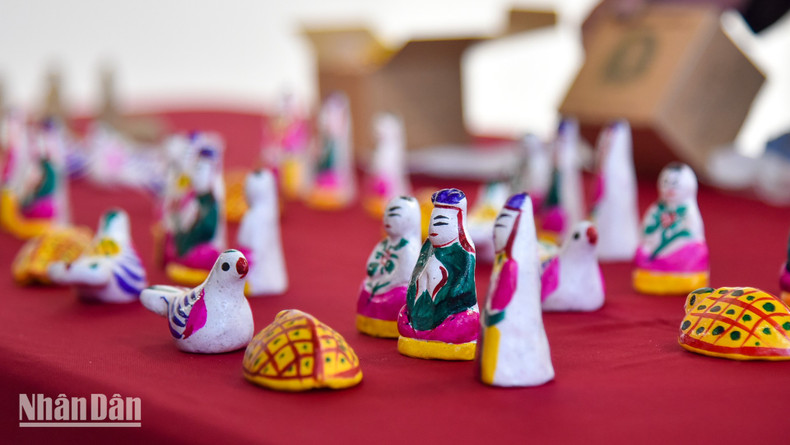 |
| A display space is also dedicated to clay figurines from Ho Village—a traditional folk toy originating from Dong Khe (also known as Ho Village) in Song Ho Commune, Thuan Thanh District (Bac Ninh Province). They are closely tied to the childhood memories of many generations and are an essential part of the traditional Mid-Autumn Festival feast. |
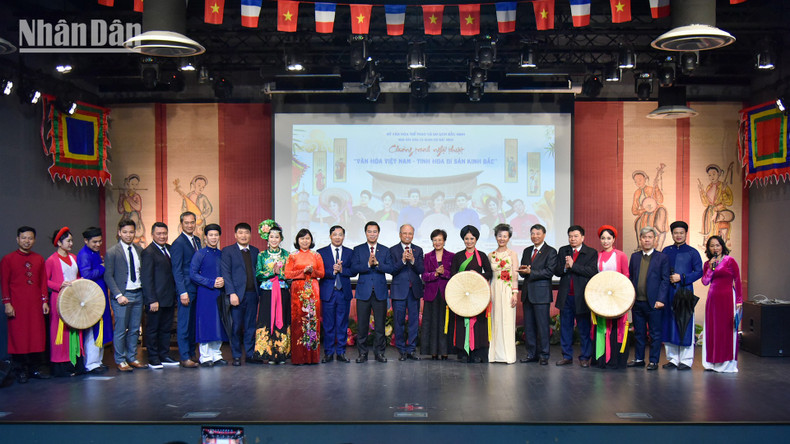 |
| The event contributes to opening up broader opportunities for cultural cooperation between Vietnam and France in the future, particularly in the joint effort to have Dong Ho folk paintings recognised by UNESCO as an Intangible Cultural Heritage in Need of Urgent Safeguarding. |
